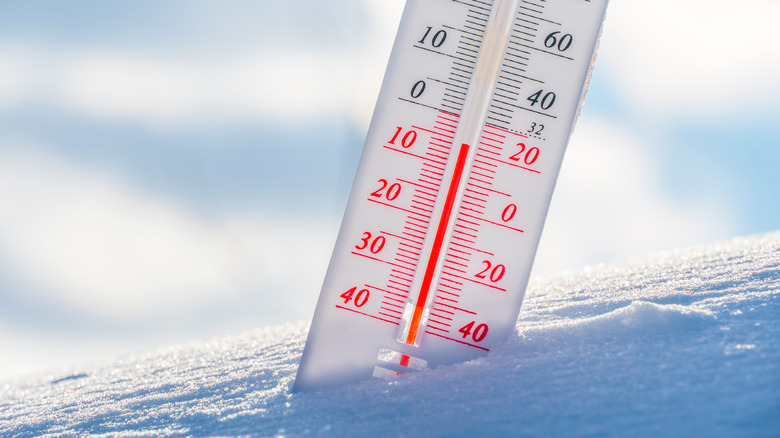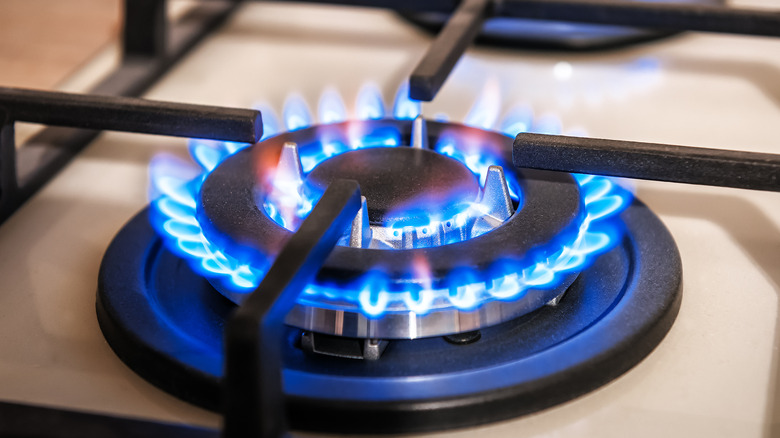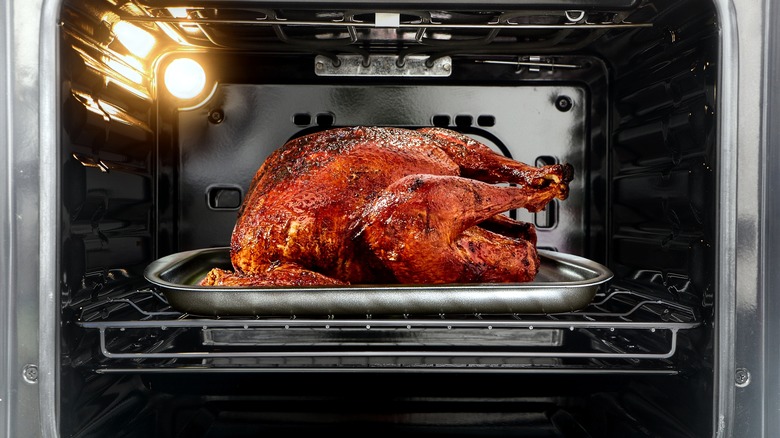The Importance Of Knowing The Difference Between Temperature And Heat
Across the country, falling temperatures are forcing Americans to bundle up in their warmest winter wear and find somewhere to hide, crotchety and shivering, from the elements. (Fox News even suggests that the plummeting temperatures may cause it to rain iguanas in Florida — really.)
Ultimately, where there's less heat, it's going to be colder. This may sound obvious, but the terms heat and temperature, while often applied to similar situations, are two completely separate concepts. Odds are, you use the two words somewhat interchangeably in your daily life. In light of the recent cold front, you may have found yourself asking a loved one to raise the temperature in your home or to crank up the heat.
While both may both be correct in this situation, that isn't always the case. It's important that you know the difference between temperature and heat, which can be explained in simple, scientific terms.
What is heat?
According to Byju's, "the heat of an object is the total energy of all the molecular motion inside that object." Science Learning Hub explains that when the temperature of an object is raised, the particles within it become more active, which in turn raises its heat energy.
When cooking, it's important to understand the different ways that heat energy is dispersed. They all have the same result of raising your dinner's temperature, but they use different methods.
As WebstaurantStore explains, conduction takes place when heat moves through objects by way of direct contact. For example, your skillet sits on the burner until it's hot enough to sizzle up your bacon — that's conduction. The air in your oven is heated via convection, which is when heated air disperses its energy into whatever you're baking. (This is why it gets so hot when you're cooking in the summer.) Finally, there's radiation, wherein heat energy waves bombard your food; your microwave uses radiation.
Temperature is a measure of heat
As Byju's explains, "Temperature is the measure of the thermal energy or average heat of the molecules in a substance." According to National Geographic, an object's temperature, usually measured in either degrees Fahrenheit or degrees Celsius, is the measure of the total amount of heat energy it contains.
National Geographic adds that water boils and freezes at 212 F and 32 F, respectively. When you're in the kitchen, knowing the right cooking temperature for whatever dish you're preparing is arguably the most important step in the meal preparation process.
Certain red meats, including beef, pork, and lamb, should be cooked until their internal temperature reaches 145 F, unless it's ground, in which case it should be cooked to 160 F. Poultry, on the other hand. needs to reach 165 F. Whatever cooking method you use, make sure your food reaches those minimum internal temps.


